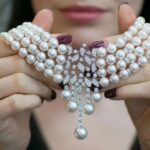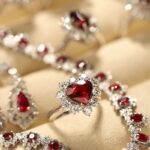
From May 25 to October 7, 2024, L’ÉCOLE School of Jewelry Arts (Shanghai) presented an exhibition titled “Garden of Emeralds, Discover the Gemstones”. Emeralds, these ancient and precious gemstones, have been captivating people since time immemorial with their unique green radiance and unparalleled beauty. Their rich green color seems to be a concentration of nature’s soul, exuding a profound and alluring charm.
The emerald-themed exhibition showcased exceptionally rare gemstones of immense historical and cultural value. Through a collection of top-tier emerald jewelry pieces from the last century, visitors were transported through time to witness the glorious era of emerald gemstones. These emeralds, with their elegant and magnificent luster, led us into a world of wonders and mysteries.
Each piece of jewelry in the exhibition was a unique work of art. They embodied the wisdom and creativity of designers, as well as the exquisite craftsmanship of jewelers. Whether worn by royalty or collected by socialites, these pieces not only displayed the aesthetic tastes of their time but also reflected the evolution of social and historical perspectives.
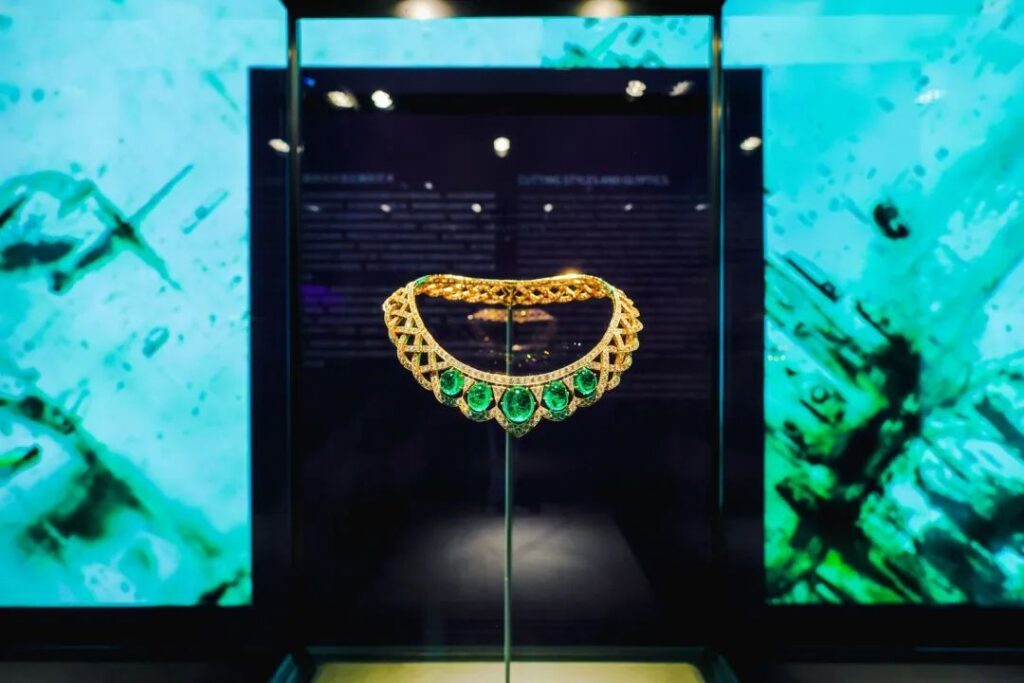
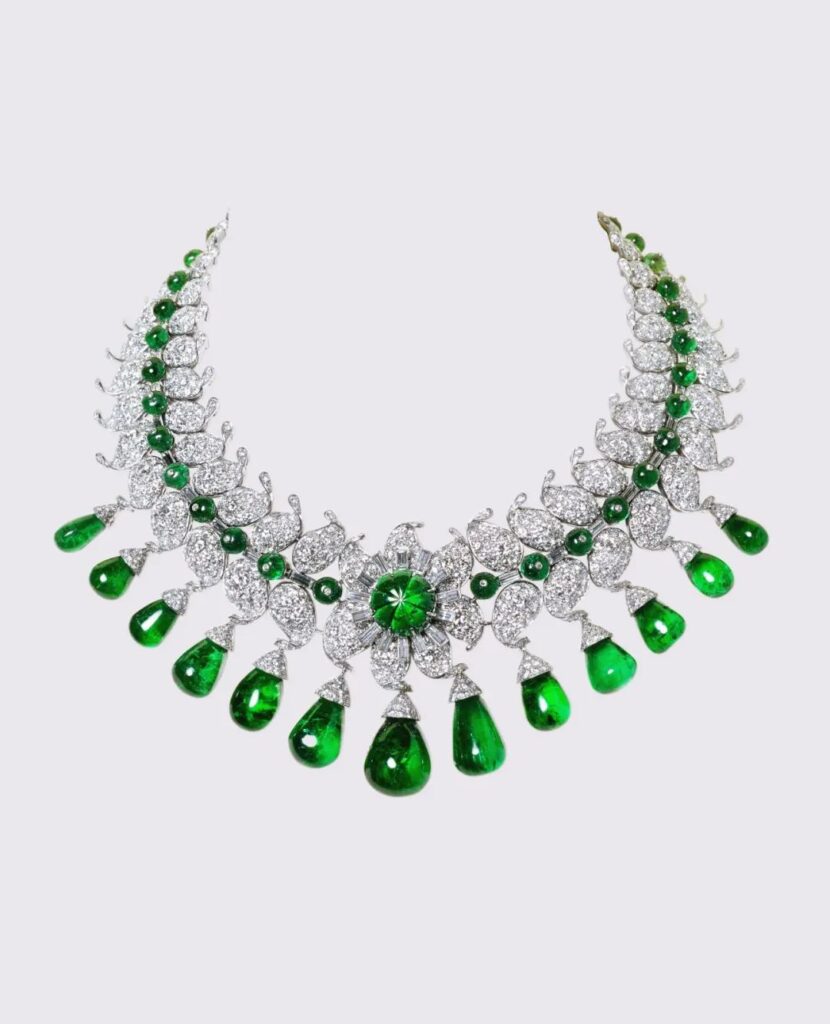
One of the most mythical pieces in the exhibition was the “Winged Dragon Pendant” from the late 16th century Renaissance period. Throughout history, dragons have been closely associated with gemstones. In Western culture, dragons were generally considered as underworld creatures dwelling in underground caves. It was believed that dragons concealed dazzling gemstones with magical powers in their heads. These gems hidden in dragon heads were called “dracontites”.
Philippe de Thaon, in his work “Alphabetical Lapidary” (c. 1117), described the dragon stone as a gem originating from dragons. In French, this stone was called “Carbuncle” and was highly favored by kings for its brilliant radiance. Marbode praised it, saying: “Carbuncle shines without the aid of external light; no stone is brighter than it. Its radiance can illuminate the night.” Emeralds can be considered as a green version of Carbuncle.
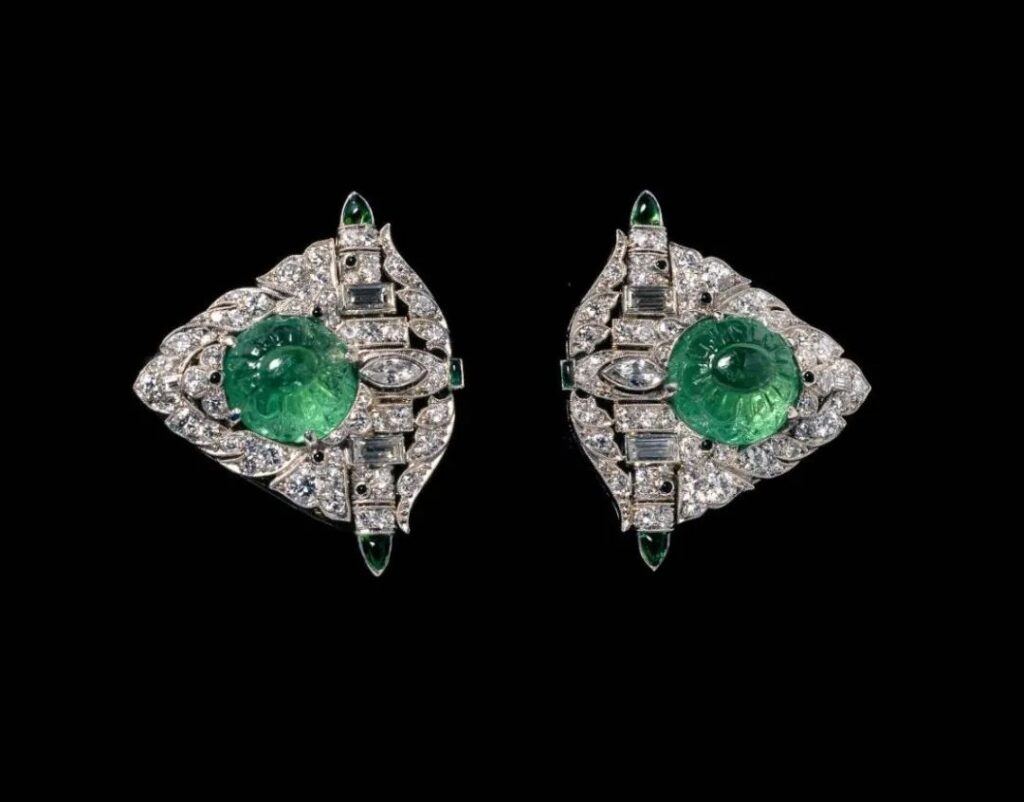
Artists have long been fascinated by the connection between emeralds and dragons. The “Winged Dragon Pendant” vividly embodies the fusion of Western mythological dragon imagery with emerald gemstones. This pendant depicts a dragon in full flight, with wings and body crafted from gold and enamel. The dragon’s claws grasp a lizard or salamander, while its green body is covered in scales.
The pendant’s centerpiece is a pear-shaped faceted emerald set in the dragon’s belly using a bezel setting. Two cabochon-cut emeralds with facets are set at the top and bottom of the piece. The dragon’s eyes and mouth are accentuated with blue and red enamel. The overall design is lifelike, with the extensive use of emeralds imbuing the pendant with a mysterious aura.
Dragons, being mythical creatures combining features of various animals, have been depicted in different forms throughout history. In Western culture, while often seen as demonic creatures, dragons in European heraldry symbolize power and are associated with positive attributes like wisdom and vigilance.
Diana Scarisbrick, in her description of this jewel, notes that the dragon bears a striking resemblance to those painted by Paolo Uccello in his Saint George and the Dragon paintings, now housed in the National Gallery in London and the Musée Jacquemart-André in Paris. In these paintings, the flying dragon is depicted with a gaping mouth, a red, agile tongue, an aggressive jaw, large bat-like wings, and powerful hind legs with sharp claws.
This piece exemplifies the exceptional jewelry craftsmanship and artistic creativity of Renaissance artisans.


One of the exhibition’s highlights is an emerald necklace dating back to the early 18th century, exemplifying the regal symbolism of royal jewelry. This exquisite necklace from the Albion Art Jewellery Institute features an outer circle set with 13 rectangular emeralds and 15 pear-shaped emeralds. Interspersed among the 13 rectangular emeralds are 14 cushion-cut diamonds of similar size. At the center is a larger, detachable octagonal dome-cut emerald.
Surrounding this octagonal emerald is a layer of rose-cut diamonds. The magnificent octagonal outline complements the surrounding diamonds’ fire, paired with matching three-dimensional teardrop-cut emerald earrings, reflecting the splendor and grandeur of Catherine the Great’s court.
Catherine II was enamored with the brilliance of various jewels. In her jewelry collection, metal was barely visible as most pieces used pavé settings where gemstones’ brilliance obscured the metal parts. This set was likely crafted by Rundell, Bridge & Rundell in the 1830s. According to the Marquis of Lothian family, these extraordinary Colombian emeralds were a gift from the Empress to John Hobart (1723-1793), the ambassador to Russia.
John Hobart, the 2nd Earl of Buckinghamshire, was posted to St. Petersburg from 1762 to 1765. This demonstrates how exquisite royal jewelry collections were also used as political and diplomatic gifts.

Another piece closely associated with Catherine II is a late 18th-century brooch featuring an intaglio emerald portrait of the Empress. Created by Johann Caspar Jäger, this intaglio emerald further exemplifies the connection between emeralds and power.
This large emerald intaglio was a congratulatory gift to the Empress from Count Alexis Orlov-Chesmensky (1737-1808). The sizeable emerald portrait depicts the Empress’s left profile, wearing a laurel wreath symbolizing glory, with a row of pearls adorning her hairline and soft, curly hair falling naturally on her shoulders. The gem portrays the Empress with a dignified posture and solemn expression, surrounded by a circle of brilliantly shining cushion-cut diamonds.
This intaglio portrait is Jäger’s masterpiece, showcasing the Empress’s unique style through meticulous craftsmanship. It also illustrates the important role portrait jewelry played in establishing the image of imperial power during the Empress’s reign, serving as a crucial part of the propaganda system.
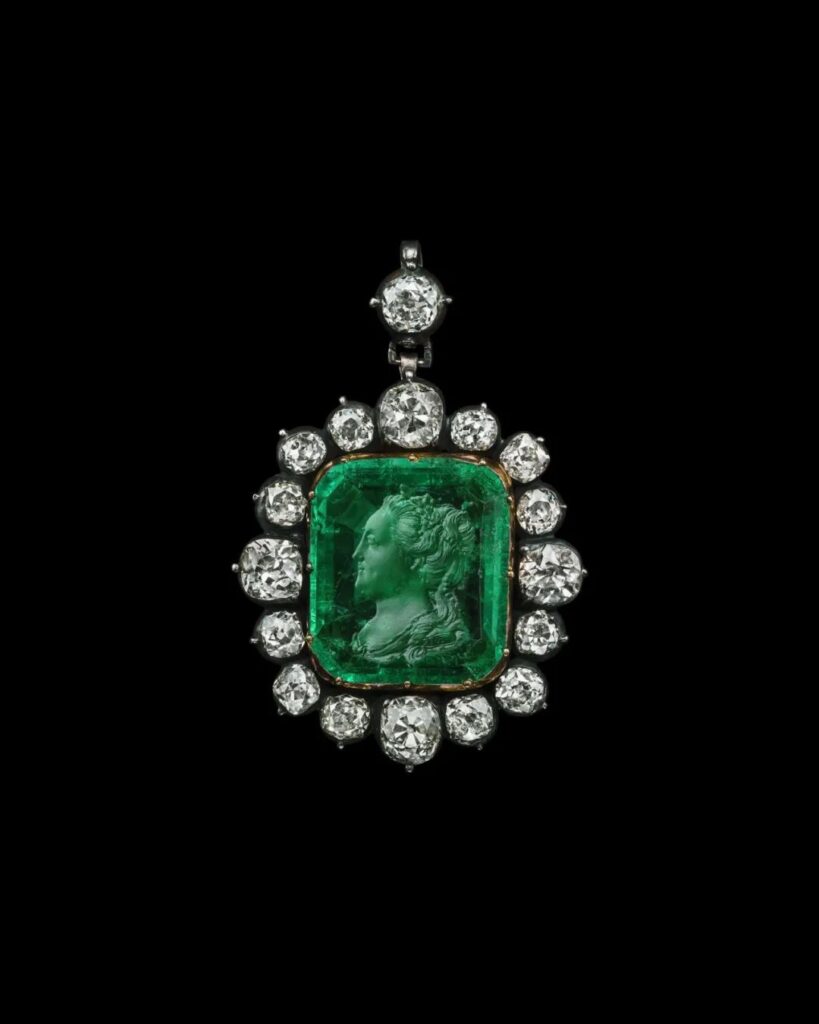
The Enigma of Emeralds: Unveiling the Secrets of the Garden of Green Gems
Tweet
